Bonus Material! 10 of Our Favorite B Corporations [PDF]
Subscribe & Listen: Apple Podcasts – Spotify – YouTube
There is a lot of mention of Certified B Corporations and the B Corp movement on the Grow Ensemble blog…and podcast…and newsletter…and if you’ve talked with any of us, in conversation generally…
But what is a B Corporation? Who becomes a B Corp? And why does Grow Ensemble aspire to be one? All good questions not just for companies interested in making their good-for-the-world missions and practices official, but also for customers and clients.
Well, to avoid burying the lead here: B Corp certification is the gold standard for better business practices, providing the rigorous standards and accountability necessary to certify truly socially responsible companies. The what, who, and why mentioned above can be answered through a discussion of how a company becomes B Corp certified.
The how centers around the B Impact Assessment. Since our team recently completed our first real B Impact Assessment, we wanted to share what we learned from our experience about the B Corp community and the certification that most impacted our endeavor to join the community of the (currently) 3,301 certified companies!
We hope this post will answer these questions for you by providing insight into the process required before a company can become a B Corp. If you have more questions about the process, the organizations involved in certification, or the companies being certified, check out the B Corp website or B Lab’s B the Change blog!
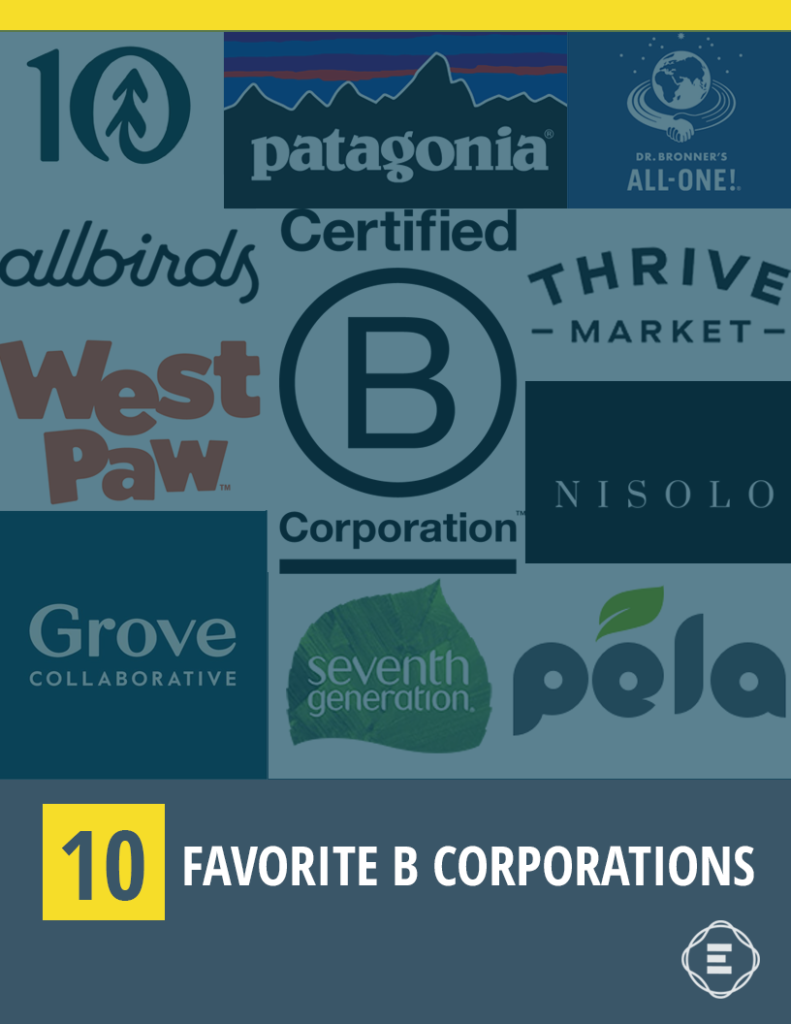
![]() GET THE LIST: 10 OF OUR FAVORITE B CORPORATIONS!
GET THE LIST: 10 OF OUR FAVORITE B CORPORATIONS!
Learn more about our top 10 favorite B Corps to shop from and support.
An Overview of the B Impact Assessment
Let’s get back to those first questions we mentioned.
What is the B Impact Assessment?
To become B Corp certified, companies have to complete the B Impact Assessment (BIA), a comprehensive questionnaire that determines a company’s impact on their community, employees, the environment, and beyond.
The B Impact Assessment measures companies’ social and environmental impact through a deep dive into their internal policies, partnerships, environmental outputs, social contributions, metrics used for tracking impact, and methods employed to ensure that impact is positive.
After about 2 hours’ worth of questions, companies are given their b impact report that breaks down how they did in each section of the Assessment.
The impact report includes an impact score. To be eligible for B Corp certification, that score must be at least 80. And “at least” in no way describes the accomplishment. A score of 80 is an impressive accomplishment and to get there requires very intentional steps to build a sustainable business model.

Who is Involved with the B Impact Assessment?
The BIA is run by B Lab, a nonprofit organization that not only provides the BIA but is also responsible for reviewing Assessments for companies seeking B Corp certification, approving maintenance of certification, and providing guidance for those seeking recertification.
Questions within the Assessment are created by the Standards Advisory Council (SAC) made up of independent experts within business and academia. This is not a check-the-box experience. The questions require raw, quantitative data and information to accurately evaluate how your business impacts the world around it, near and far. This is not about abstract ideals and beliefs. It’s about cold, hard, actual impact.
Keep in mind, the BIA is not exclusive to companies going through the B Corp certification process, and completing the Assessment does not commit anyone to being reviewed. The nonprofit B Lab offers this free tool to be used by anyone who wants an impact audit regardless of whether that means certification or not.
Anyone within a company can complete the Assessment from CEO to Intern!

Why is the B Impact Assessment Important?
When a single product can be marked with 4-6 certification logos, the authenticity of those certifications can start to seem elusive. But there are a few certifications we at Grow Ensemble trust and either already have or are actually working toward achieving ourselves! One of the (if not the) most important: B Corporation Certification.
B Corp certification represents the highest standards for better business practices across the industry.
Not only is the Assessment a great tool to measure and monitor your company’s impact, but it is outrageously educational. As you go through the Assessment, you’ll be introduced to aspects of social and environmental impact you have never considered finding a solution for, or maybe haven’t even recognized as a problem.
This isn’t just an analysis tool. It’s a solutions tool. Within the assessment, you’ll find endless resources and guidance on what these questions address and what kinds of changes you can make to positively impact your community and your business
What Kinds of Questions are in the B Impact Assessment?
Recently, we optimistically completed our first B Impact assessment. Our overall impact score? A humbling…25.9.
I know what you’re thinking, “WHY IS YOUR SCORE SO LOW!?” Yeah, we get it.
Luckily our impact report contains the answers to that question. And even luckier, B Lab supplies practice guides and tips for how to understand our impact and improve. This thing is no joke, but the system is set up to help every company find the information and tools they need to make the changes their company, their community, and the planet can all benefit from!
Here’s a brief look at the detailed questions within the B Impact Assessment with a little discussion about our performance and impressions as we went through each section.

Governance
“The Governance Impact Area evaluates your company’s overall mission, ethics, accountability and transparency through topics such as integration of social and environmental goals in employees’ performance evaluation, impact reporting and transparency, stakeholder engagement, and more.”
This section covers questions about your company’s mission and approach to impact. This isn’t just what you believe, but what you have written down as formal policy, and how you are implementing your mission into your business.
It also asks about your engagement with stakeholders of your company regarding their role in your impact and how their participation shapes your governance structure. These questions get into how transparently you operate your business with respect to stakeholders, employees, and the general public.
This is the section that looks for formal policy and legal frameworks that commit your company to its impact regardless of ownership. This legal framework can take the form of, for example, operating as a cooperative or incorporating as a benefit corporation (think business structures like Patagonia).
We scored far lower in this section than we thought we would, but it’s also the area we think has the most potential in terms of increasing our score for next time. What it revealed to us is that, while we have internally understood policies, we do not have all of our principles written down as formal company statements both to the public and our team.
Community
“The Community Impact Area evaluates your company’s contribution to the economic and social well-being of the communities in which it operates, through topics such as diversity and inclusion, job creation, civic engagement and philanthropy, supply chain management, and more.”
This section focused on your impact business model. This includes a series of questions about workplace practices in terms of diversity, equity, and inclusion. It also gets into what kind of giving your company does to create a material, positive impact on the community. Giving includes financial contributions, volunteerism, policy advocacy, vetting and sustainability of your supply chain, and operational actions like who you bank with.
We were excited that this was our strongest section! Even still we have a long way to go…but you know that. You saw our score. We had long discussions based on the questions in this section. The diversity questions go further than the boundaries of your own company. It asks about the companies you partner with or contract with as well, which brought up questions we’d never even considered.
Another thing we liked about a lot of this analysis was that it looks at the percentage of revenue and time given as opposed to total amount. This means that success in this section is available to companies of all sizes.

Environment
“The Environmental impact Area evaluates your company’s overall environmental stewardship, including how the company manages general environmental impacts as well as specific topics like climate, water use and sustainability, and impacts on land and life.”
This section looks at your company’s environmental performance. Questions ask about your facility use in production and distribution, or for companies like us, your remote workplace policies and guidelines. It also asks detailed questions about your energy use, measuring, methods of efficient energy use, and energy reduction.
To be blunt, we were just not as prepared for this section as we should have been. We are 1% for the Planet members, and we were recently Climate Neutral certified, and we strive to grow the environmental protectors in the broader community, so our environmental stewardship has always been at the front of our minds.
But, having a completely distributed team, we hadn’t considered how we were formally advising our team to be energy efficient or how we were actually tracking whether we, individually, were successfully making a positive environmental impact. Again, some of this was a palm in the face moment for us—duh! How do we know our environmental ethos is translating to real sustainability?
Like much of the Assessment, it was refreshing to be faced with that exact question “where are the numbers and the policies to show your approach is working” that makes us excited for the actual improvement for next time.
Customers
“The Customers Impact Area evaluates the value that your company creates for your direct customers and the consumers of your products or services through topics such as ethical and positive marketing, warranty and quality assurance of products and services, data privacy, data security, and more.”
The existence of this section was a surprise to us! Of course, it makes perfect sense that this section is included in the Assessment, but still, I imagine many customers and clients would be surprised to find that B Corp Certified companies are being held accountable for having a positive relationship and dialogue with them! These questions address the reality that if you want to applaud better-for-the-world business practices, customers and clients are a factor.
Beyond the reflection each question required of us, the mere fact that we were surprised this was a section was deeply impactful for us. I think this surprise stemmed from our perspective as consumers rather than a business. While we value our client and community member relationships as a business, as a customer myself, I compartmentalized respectful practices and policies for customers and that for socially and environmentally responsible business practices. As we went through this section, it became more and more clear that we have a lot of social conditioning to undo in that regard.
These questions go deeper than surface-level customer service questions. They get into whether companies have mechanisms in place that ensure they are collecting information to understand whether their products or services are actually having a positive effect on those buying or using them. They ask about feedback outreach and success monitoring within your company.
Turns out, when you see “the B,” that means B Lab has vetted that company on the way they treat you.

![]() GET THE LIST: 10 OF OUR FAVORITE B CORPORATIONS!
GET THE LIST: 10 OF OUR FAVORITE B CORPORATIONS!
Learn more about our top 10 favorite B Corps to shop from and support.
Our Reflections on Grow Ensemble’s First B Impact Assessment
We think there are 3 general categories of points that account for our low score (thanks for bringing it up).
Category 1 — Our ‘Back-Burner’ To-Do’s
First are those policies or practices that we just haven’t adopted. For example, as of right now, we have not switched our business bank account to an ethical and socially responsible bank. This has been on our to-do list for a year, and this Assessment was just the kick in the butt we needed to make the leap.
Category 2 — The Informal & Unwritten
Second, there are the points we are missing out on because we do not have formal, written policies for some of our existing systems and practices. This is inspiring because it feels like there’s quick mobility with our current scoring, and it feels like something we are prepared to jump right into (these make up a lot of our most immediate post-assessment goals).
Category 3 — Breaking New Ground
Third, there is just a lot we have never thought about, and we have a lot of growing to do. We love to learn, and that’s what most of our work is based on, so that. is. exciting. In some cases, this means we haven’t identified metrics to measure our success in that area, in others, we haven’t thought deeply enough about the issue and our proposed solution, and for some, the assessment was our first introduction to the issue or opportunity for solutions!
Things We Wish We Knew Before We Jumped in:
- Have the last 2 years’ tax documents readily available.
- If possible, have energy and water usage numbers available.
- Make sure you have time set aside for the whole assessment in one sitting. We liked to chat about some of the questions as we went through, so it took us a little longer than expected. If you have 3 hours, that is plenty!
- The star at the right top corner of each question allows you to mark goals when you don’t get to answer a question like you’d want to. It also allows you to set deadlines for meeting your mini-goals, and you can set up email reminders for your due date (in 1, 3, 6, and 12 months).
In the end, the Assessment was eye-opening as to our progress and informative as to our path forward. It also gave us even more appreciation, both as individual customers and a business, for certified B Corporations.

Annie Bright
Co-Founder & Managing Editor, Grow Ensemble
I’m Annie Bright, co-founder of Grow Ensemble. I’m a researcher, writer, and editor with a focus on sustainability, social impact, and human rights.

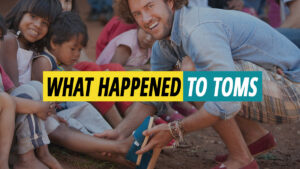

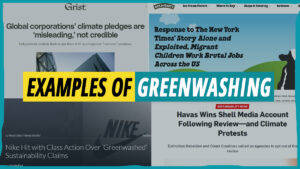
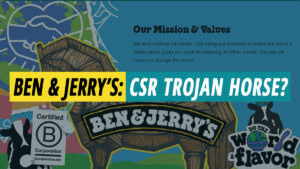
Valuable information regarding B Corp. Thankyou for sharing.
You bet!
Glad you found it helpful.
-Cory